How to Prune Roses of All Types
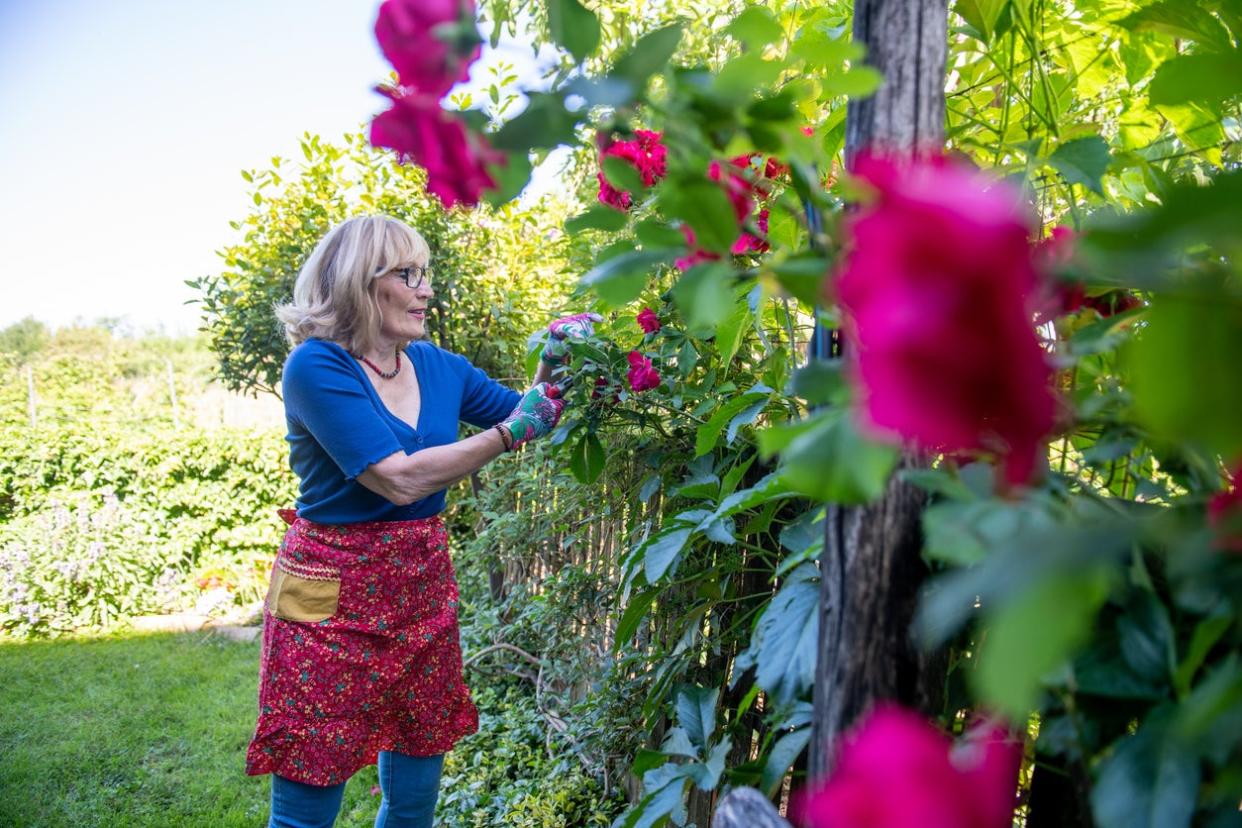
According to Clemson Cooperative Extension, rose bush pruning “keeps the plant healthy,” ”promotes new growth,” and “encourages flowering.” However, modern reblooming bushes require much more of it than heirloom once-bloomers do. So, when considering how to prune roses, determine which rose bush types you have.
Most modern cultivars such as hybrid tea roses, flower off and on throughout the summer, making them rebloomers. Heirlooms such as albas, centifolias, damasks, gallicas, and mosses usually produce only a single large flush of blooms in early summer, making them once bloomers. However, bourbon, China, hybrid perpetual, noisette, Portland, and tea heirloom classes of roses can rebloom.
Project Overview
Working Time: 10 minutes per bush
Total Time: 1 hour
Skill Level: Intermediate
Estimated Cost: $20 to $90

Photo: istockphoto.com
Before You Begin
For pruning to be effective, it must be done at the right time. Prune reblooming rose bushes, which flower on new wood, at the same time that forsythia shrubs bloom in your zone. That varies from January in California to April in some of the northeastern states. Another way to tell, according to Clemson, is when the leaf buds begin to swell. Prune once-blooming rose bushes, which flower on old wood, after they have finished their early summer blooming.
Old wood: Old wood means canes that grew in the previous year and survived the winter.
New wood: New wood means canes that grew in the present year.
STEP 1: Remove old foliage, clean pruning tools, and don protective clothing.
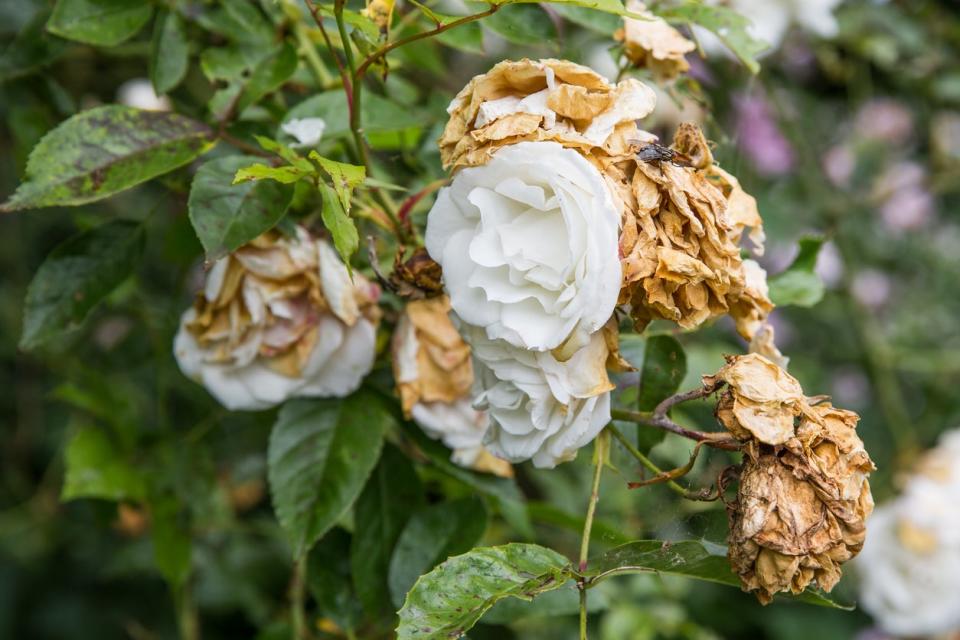
Photo: istockphoto.com
Two weeks before you plan to prune everblooming roses, remove all the old foliage still clinging to them and rake up any fallen leaves beneath the plants. Carry the debris away to be trashed; this will help prevent the spread of rose bush diseases. Removing the old leaves will force the swelling of new leaf buds on the bushes and make pruning easier.
Before you begin, clean the blades of tools such as pruning shears and loppers with rubbing alcohol. Wear long heavy sleeves and long leather gloves to protect your arms and hands from the roses’ thorns.
STEP 2: Prune dead, old, weak, or crossing canes from reblooming bushes.
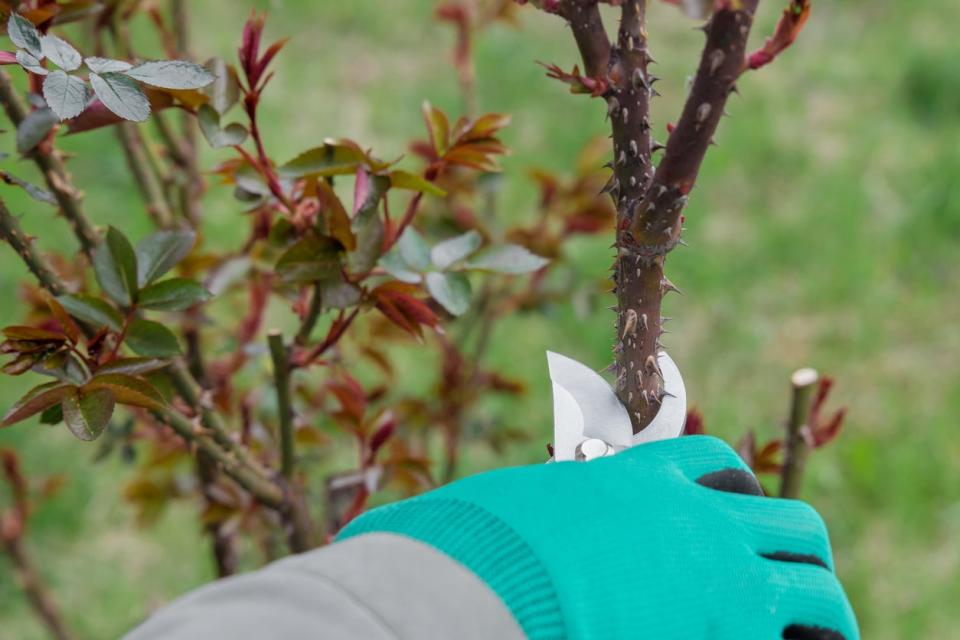
Photo: istockphoto.com
First, lop off canes that are completely dead, as proved by the pith inside them being brown. Then prune back any that are partially dead to where the pith inside them is greenish-white with no tinge of brown in it. Make each cut at a 45-degree angle, ? inch above an outward-facing leaf bud.
You also will want to remove old gray canes and those smaller than the diameter of a pencil, as well, as they will lean into the middle of the bush rather than inclining outward. If two canes are rubbing together, remove the weakest one.
STEP 3: Cut the remaining healthy canes back by about one-third.
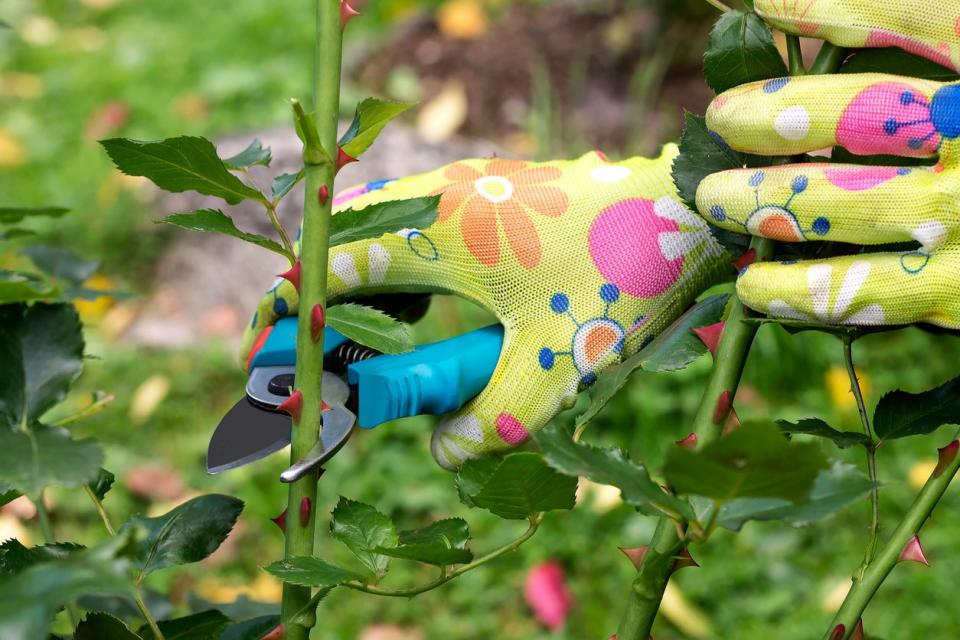
Photo: istockphoto.com
In mild climates where the canes don’t die back much naturally, cut the canes back by one-third. In colder zones, if pruning out dead and dying wood has already drastically reduced the size of the bushes, you probably will want to skip this step.
Keep in mind that reblooming bourbon, China, and noisette bushes don’t require much pruning except the removal of dead rose branches. However, hybrid perpetual, Portland, and heirloom tea roses can be cut back as drastically as you would a modern hybrid tea rose.
STEP 4: Prune only lateral canes on climbers, training main canes horizontally.
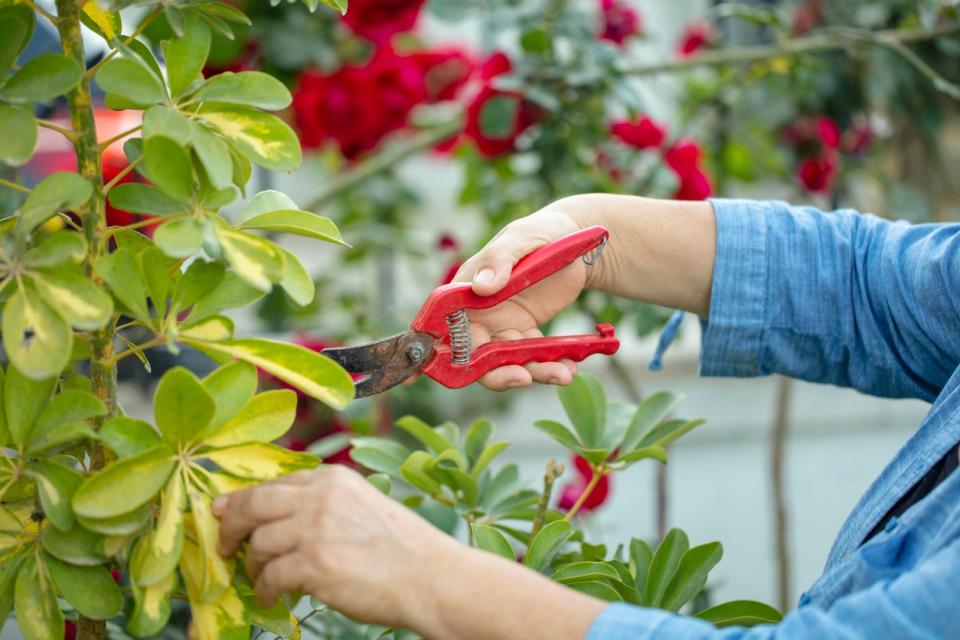
Photo: istockphoto.com
When pruning climbing rose bushes, cut back only the lateral canes, those branching out from the main canes, rather than the main canes themselves. Leave at least four leaf buds on each of those lateral branches. Use pruning shears for canes up to ? inch in diameter, loppers for those up to 1? inches, and a pruning saw for anything larger than that.
Ben Hanna of Heirloom Roses notes that “In order to have your rose produce blooms from top to bottom, you must train your main canes to grow horizontally and allow the lateral canes to grow upward.”
STEP 5: In midsummer, prune deadwood and old wood from once-blooming roses.
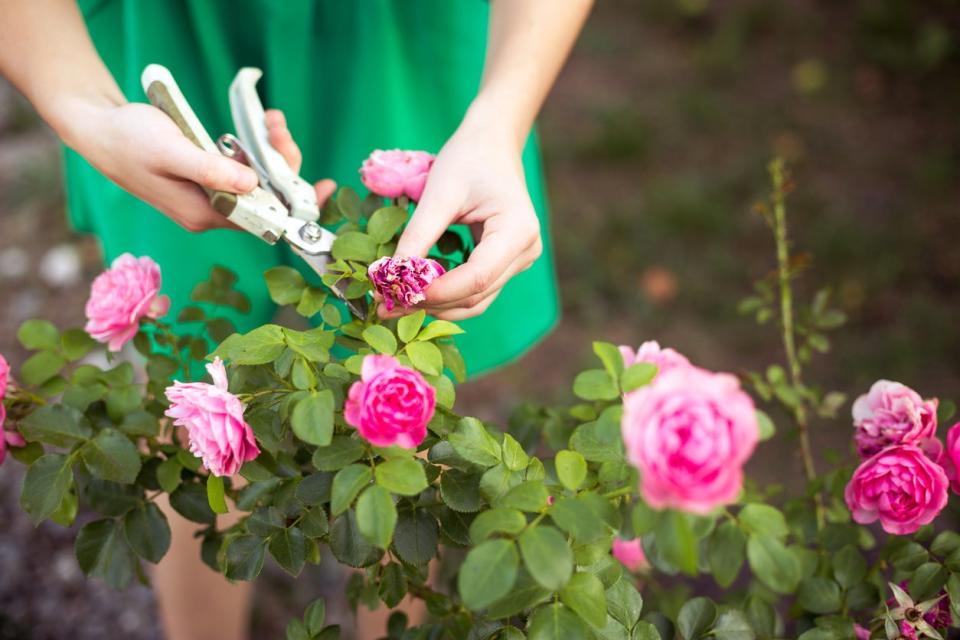
Photo: istockphoto.com
Once-blooming roses don’t require as much pruning. After they have finished flowering in midsummer, remove any dead canes or branches from them. You may also want to prune out one-third of the oldest living canes from each bush to rejuvenate it. They will include the ones that are grayest in color.
If you need to trim rose bushes that are outgrowing their space, do that in midsummer also, to allow them time to recover before winter. Feel free to deadhead repeat-flowering roses as flowers fade in summer to encourage new blooms. Don’t do any pruning after late summer since it stimulates new growth that could be damaged by frost.
Final Thoughts
If you still are unsure about how to trim rose bushes, keep in mind that, although pruning is an important part of rose bush care, it isn’t absolutely necessary. So don’t give up on the idea of planting a rose bush just because you don’t know how to prune it.
On the other hand, don’t be afraid to give pruning a try by following the directions above. As former American Rose Society president Bob Martin notes, the only way to totally fail at pruning roses is to lop them off below the grafts.